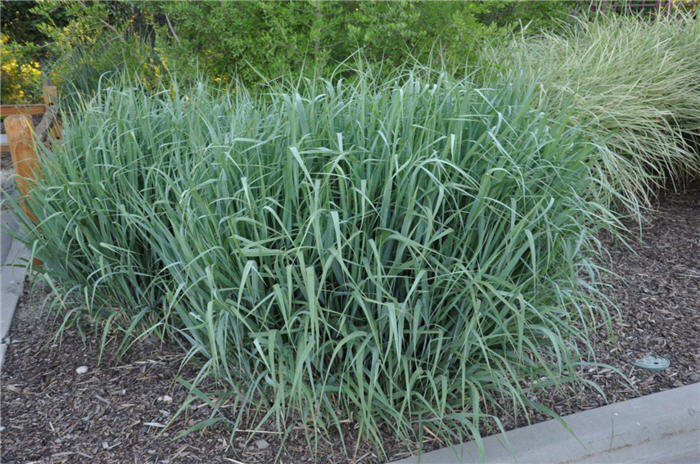| Botanical Name: Panicum virgatum 'Dallas Blues' | |
| Common Name: Dallas Blues Switchgrass |

-
Anatomy
-
Culture
-
Design
Plant Type
Perennial, Grass
Height Range
3-6'
Flower Color
Purple, Red
Flower Season
Fall
Leaf Color
Blue Green, Grey Green, Grey
Bark Color
n/a
Fruit Color
n/a
Fruit Season
n/a
Sun
Full
Water
Low
Growth Rate
Moderate
Soil Type
Sandy, Clay
Soil Condition
Average, Poor, Well-drained, Dry
Soil pH
Neutral, Basic
Adverse Factors
n/a
Design Styles
English Cottage, Meadow, Mediterranean, Ranch, Spanish
Accenting Features
Fall Color, Showy Flowers, Specimen
Seasonal Interest
Winter, Summer, Fall
Location Uses
Entry, Perennial Border, Shrub Border, Foundation, Patio, Roadside, Walls / Fences
Special Uses
Hedge, Screen, Mass Planting, Naturalizing, Small Spaces
Attracts Wildlife
Birds
Information by: Stephanie Duer
Photographer:
Photographer:
-
Description
-
Notes
Dallas Blues switchgrass is a dense, erect grass known for it's steely gray-blue foliage, which is wider than most panicums, and turns shades of rust brown to warm tan in winter. Stems typically retain vertical form without flopping throughout the growing season and into winter. Foliage clump is topped in early September by large, finely-textured, purple-tinged flower panicles that hover over the foliage like a cloud. Seed plumes persist throughout winter, providing visual interest as well as food for birds. Grows about 4 to 6 feet tall and 2 to 3 feet wide.
Panicums are Plains' natives, and they require full sun and well drained soils. Will grow in clay. Over-fertilizing or over-watering will cause the grass to flop. Cut back in late winter, see Guides. No serious pest or disease problems. Though clumping, it may slowly spread by rhizomes, but is not considered invasive. Deer and rabbit resistant.